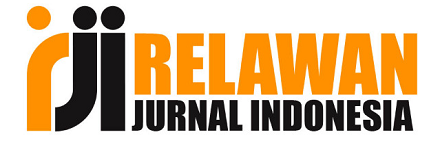PERAN PELEMBAGAAN DALAM PROGRAM ONE VILLAGE ONE PRODUCT MELALUI EMPOWERMENT MASYARAKAT
DOI:
https://doi.org/10.33474/jimmu.v7i2.18646Abstract
Â
One village one product (OVOP) merupakan konsep pengembangan ekonomi yang mengarahkan suatu wilayah mampu menciptakan produk bercirikan lokal dengan potensi sumberdaya lokal dan berdaya saing global. Tujuan Penelitian adalah untuk mengetahui: 1) proses pelaksanaan OVOP sebagai upaya pemberdayaan ekonomi masyarakat 2) untuk mengetahui model pelembagaan yang digunakan dalam pelaksanaan program OVOP. Jenis penelitian adalah penelitian kualitatif. Penelitian dilakukan di Desa Sadengrejo Kecamatan Rejoso, Kabupaten Pasuruan. Metode yang digunakan berupa metode interractive model. Teknik pengumpulan data melalui wawancara dan dokumentasi. Tahapan penelitian meliputi: reduksi data, penyajian data dan penarikan kesimpulan (verifikasi). Hasil penelitian menunjukkan bahwa: 1) Proses pelaksanaan OVOP meliputi: a) Pemetaan potensi, b) Menemukan sasaran pada basis desa tertinggal, c) OVOP dikembangkan secara kelompok, d) Memilih potensi lokal, e) Mengembangkan potensi lokal, f) Menguatkan kelembagaan dengan konsep pemberdayaan, g) Membuat perencanaan usaha. 2) Model pelembagaan yang digunakan dalam pelaksanaan OVOP adalah kombinasi antara buttom up dan top down, meskipun feedback belum berjalan secara efektif. Implikasi dari penelitian ini adalah bahwa program OVOP yang telah dilaksanakan memerlukan monitoring dan evaluasi untuk perbaikan pelaksanaan kegiatan selanjutnya.
Kata Kunci:Â Pelembagaan, Empowerment, One Village One Product (OVOP)
Â
           One village one product (OVOP) is an economic development concept that directs a region to be able to create products with local characteristics with local resource potential and global competitiveness. The research objectives are to determine: 1) the process of implementing OVOP as an effort to empower the community's economy 2) to determine the institutional model used in the implementation of the OVOP program. This type of research is qualitative research. The research was conducted in Sadengrejo Village, Rejoso, Pasuruan. The method used is an interactive model method. Data collection techniques through interviews and documentation. The research stages include: data reduction, data presentation and conclusion drawing (verification). The results showed that: 1) The OVOP implementation process includes: a) Potential mapping, b) Finding targets on a disadvantaged village basis, c) OVOP is developed in groups, d) Selecting local potential, e) Developing local potential, f) Strengthening institutions by the concept of empowerment, g) Making business plans. 2) The institutional model used in the implementation of OVOP is a combination of bottom up and top down, although the feedback has not been effective. The implication of this research is that the OVOP program that has been implemented requires monitoring and evaluation to improve the implementation of further activities.
Keywords:Â Community, Empowerment, One Village One Product (OVOP)
References
Anh, N. T. (2013). One Village One Product (OVOP) in Japan to One Tambon One Product (OTOP) in Thailand: Lessons for Grass Root Development in Developing Countries. Journal of Social and Development Sciences, 4(12), 529–537. https://doi.org/10.22610/jsds.v4i12.794
Arin Widiyanti. (2018). Human capital as an engine of economic development. Jurnal Litbang Sukowati, 1(2), 80–94.
Azizah, N., & Kriswibowo, A. (2020). One Village One Brand for Sustainable Rural Economic Development: A Three Stream Perspective. Jurnal Wilayah Dan Lingkungan, 8(1), 96–105. https://doi.org/10.14710/jwl.8.1.96-105
Denpaiboon, C., & Amatasawatdee, K. (2012). Similarity and Difference of One Village One Product (OVOP) for Rural Development Strategy in Japan and Thailand. Japanese Studies Journal Special Issue, 29(2), 52–62.
Gardebroek, C.1 and Hernandez, M. . (n.d.). This document is discoverable and free to researchers across the globe due to the work of AgEcon Search . Help ensure our sustainability . Modelling Outcomes and Assessing Market.
Hadi, S., Wasahua, O., & Masri, Z. A. (2017). Metode Analisis SWOT dalam Pelaksanaan One Village One Product Agribisnis Holtikultura (Studi Kasus di Koperasi Mitra Tani Parahyangan Cianjur). JABE (Journal of Applied Business and Economic), 4(2), 159. https://doi.org/10.30998/jabe.v4i2.2143
Indana, Z., & Sukidjo, S. (2020). Evaluation the Implementation of One Village One Product Program as Empowerment Efforts on SME’S to Develop Superior Regional Products. International Journal of Multicultural and Multireligious Understanding, 7(9), 255. https://doi.org/10.18415/ijmmu.v7i9.1966
Lubis, M. Z. M. (2018). Prospek Destinasi Wisata Halal Berbasis Ovop (One Village One Product). Jurnal Kajian Ekonomi Islam, 3(1), 30–47.
J. Moleong, Lexy. 2010. Metodologi Penelitian Kualitatif. Bandung: osda
Ndione, J. S., & Suzuki, K. (2019). Beyond the One Village One Product (OVOP) Concept through Design Thinking Approach. International Journal of Education and Research, 7(4), 143–156.
Ngugi, J. N., & Bwisa, H. (2013). Factors Influencing Growth of Group Owned Small and Medium Enterprises: A Case of One Village One Product Enterprises. International Journal of Education and Research, 1(8), 1–14. http://www.ijern.com/journal/August-2013/44.pdf
Nurunnisha, G. A., & Saudi, M. H. M. (2019). Proposed brand leverage with one village one product (OVOP) approach case study: Kalua in Ciwidey. Journal of Advanced Research in Dynamical and Control Systems, 11(3), 815–825.
Purnama, I. K. E., Ariastita, P. G. A., Handayeni, K. D. M. E., & Nugroho, S. M. S. (2019). Penerapan E-Commerce Untuk Penguatan UMKM Berbasis Konsep One Village One Product di Kabupaten Karangasem. Sewagati, 2(2), 85–90. https://doi.org/10.12962/j26139960.v2i2.4612
Schumann, F. R. (2016). A Study of One Village One Product (OVOP) and Workforce Development: Lessons for Engaging Rural Communities around the World. Journal of International OVOP Policy, 671, 1–23.
Smith, N. R. (2019). One village, one product: Agro-industrial village corporatism in contemporary China. Journal of Agrarian Change, 19(2), 249–269. https://doi.org/10.1111/joac.12301
Son, K. (2010). The start of a new program in a local government: The case of one village one product movement in Oita. Journal of Policy Science, 5. https://core.ac.uk/download/pdf/60547961.pdf
Sun, X., Zhan, L., Yang, Z., Liu, B., Li, C., & Zhu, L. (2015). Evaluation on the “one village one product†economic development benefit of chengdu Shuangliu County based on entropy weight TOPSIS method. Advance Journal of Food Science and Technology, 9(10), 749–754. https://doi.org/10.19026/ajfst.9.1653
Susanti, R., Alfiah, F., Lestari, M. D., Rahmaini, A., & Tauhid, R. (2022). Community Empowerment Through One Village One Product Based On Local Potential Of Bukit Payung Village Pemberdayaan Masyarakat Melalui One Village One Product Berbasis Potensi Lokal Desa Bukit Payung. 2(3).
Xujin, P., & Li, J. (2013). The analysis of peasant households’ collective brand maintenance behavior in the “one village, one product†program of China. Procedia Computer Science, 17, 770–780. https://doi.org/10.1016/j.procs.2013.05.099











